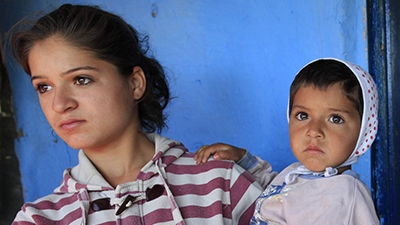In Romania, as in many other countries around the world, unemployment of specific populations remains a significant obstacle to future growth and development. The onset of the global financial crisis in 2008 had a chilling effect on the European Union and continues to reverberate through many countries, stifling business enterprise and employment opportunities - especially for youth.
Although the rise in unemployment in Romania was not as sharp as in other European countries, it lasted equally long, demonstrated by the increase in the share of long-term unemployed from 2009 (31.6%) to 2013 (46.4%).
People seeking to gain employment in Romania today share a common objective, but they are often quite distinct in terms of the barriers they face trying to enter, or re-enter, the workforce. The challenges faced by rural middle-aged men, for example, are very different to those faced by educated single young men. Consequently, unique solutions must be found to overcome such barriers.
Portraits of Labor Market Exclusion is a joint report from the European Commission and the World Bank that looks at the various challenges faced by different profiles of people out-of-work in Romania, as well as in five other countries around Europe - Bulgaria, Estonia, Greece, Hungary, and Lithuania. The report offers an in-depth analysis of each of the challenges and provides recommendations for how each country can address barriers to labor market accessibility.
In Romania, five segments of out-of-work people are singled out as priorities for activation in the report: long-term unemployed educated single youth; working-age long-term unemployed; working age-newly unemployed; low-educated rural mothers without work experience; and inactive middle-aged wives. Collectively, these clusters account for just 31.2% of the working-age population in Romania, but all five profiles together represent a medium- to high-level need for inclusion in the labor force if poverty is to be reduced.
The profile of long-term unemployed educated youth in Romania has significant potential to benefit from targeted interventions. The potentially damaging long-term effect that prolonged unemployment can have on youth makes this group of people a priority area for engagement. The report offers several policy recommendations to the Government, one of which is to create job start programs that offer placement through subsidized internships, flexible work programs, and part-time work.
In addition to young people, women in Romania have also been selected as a high priority for engagement – especially poorly-educated rural mothers with little or no work experience. A primary objective is to encourage and enable more women to participate in the labor market and then ensure they are able to find work.
To better serve this particular profile of out-of-work, it is recommended to offer short ‘second chance’ schooling – focusing on professional skills that can better link these individuals to job opportunities. Improvements in child care options would also enable many of these women to take more advantage of such training opportunities and, therefore, become better equipped to join the labor market.
Youth and women make up just a portion of the out-of-work population in Romania, but these two groups in particular illustrate the need to introduce the kinds of targeted and differentiated policy recommendations offered in Portraits of Labor Market Exclusion.
Tailoring solutions to specific labor market challenges and learning from the experiences of countries like Romania can help governments in the ongoing effort to reduce unemployment and poverty, as well as boost shared prosperity, in countries across Europe and in other regions of the world.

